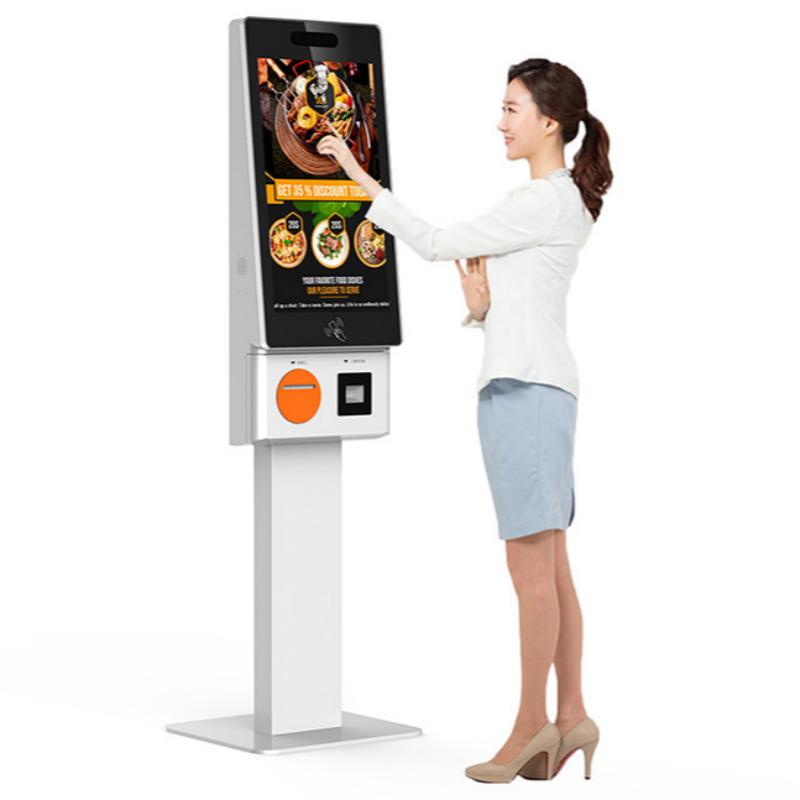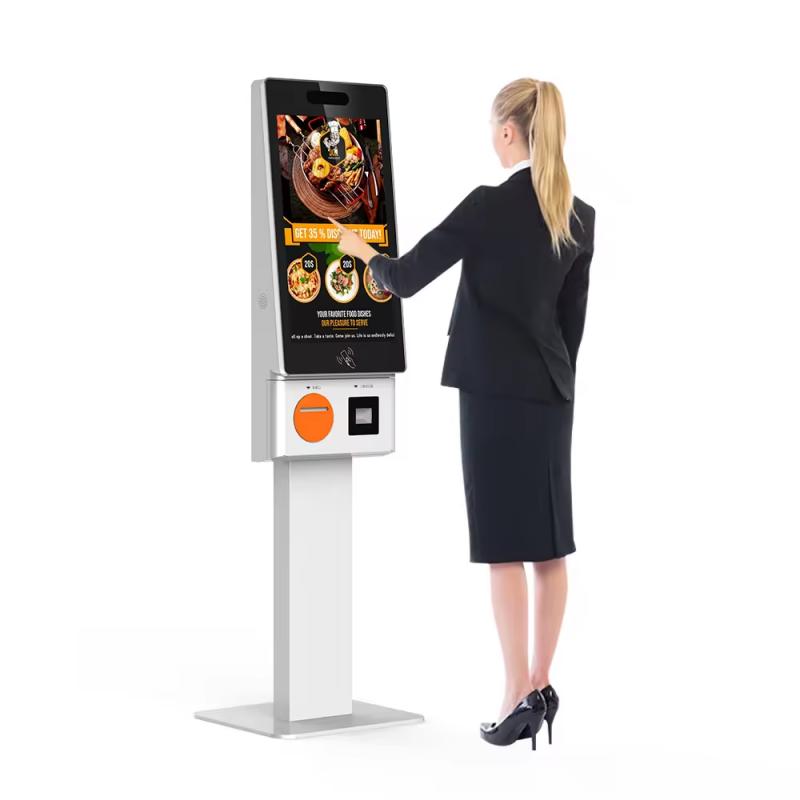Kiosk Chat refers to a communication interface integrated into a kiosk system that allows users to interact via messaging or chat functions. Typically, these kiosks serve in public or retail settings, offering customer service, technical support, or information assistance through a real-time chat window. This can be either AI-driven or facilitated by live human agents. The concept of "Kiosk Chat" enables quicker customer support, reduces wait times, and provides a personalized experience, making it highly effective in sectors such as hospitality, healthcare, banking, and retail. With advancements in AI, kiosk chat systems can now answer queries, process requests, and even handle transactions autonomously. This reduces the need for on-site staff, streamlines operations, and enhances user experience.
Select a suitable chat software provider that offers kiosk integration. Ensure the software supports your kiosk’s operating system (Android, Windows, etc.) and has features like real-time messaging, AI chatbots, and voice recognition if needed.
Install the chat application onto the kiosk through the software’s official website or app store. Follow the provider’s setup instructions to properly configure the chat system.
If you have a pre-existing kiosk management system, integrate the chat software with it. This may involve API integration to ensure the chat software works seamlessly with other kiosk functions (ticketing, check-in, payments, etc.).
Adjust the kiosk interface to highlight the chat feature. Add buttons or touch areas on the main screen that direct users to the chat system. You can also customize the chat window's design to match your branding.
Ensure your kiosk is connected to the internet via Wi-Fi or Ethernet. Kiosk chat systems require an internet connection for real-time communication and data exchange.
Test the chat system thoroughly, ensuring all responses are accurate, that the interface is user-friendly, and that the chat integrates well with other kiosk functions.
If your kiosk operates in multilingual environments, configure the chat system to handle multiple languages.

Users initiate kiosk chat by selecting the "Chat" or "Help" button on the kiosk’s main interface. This button opens the chat window, displaying the available options or prompts.
The chat may present predefined categories (e.g., ordering, booking, payments) for users to choose from. Alternatively, users can type or speak their specific query.
The chat system will respond to the user's query, either through an automated AI chatbot or a human agent. The response may include answers, instructions, or guidance on performing a task.
Users follow the instructions provided by the chat, such as how to book tickets, check-in, or process a payment.
Once the user’s query is resolved, they can exit the chat. Some kiosks may also have a feedback option after the conversation ends to improve service quality.
Real-time Messaging: Kiosk chat enables users to engage in real-time conversations with AI-driven bots or human agents for support.
Automated Responses: AI-based chat systems can offer instant, pre-programmed answers to common questions or tasks.
Multilingual Support: Many kiosk chat systems support multiple languages, making them accessible in diverse environments.
Voice-to-Text: Some kiosks include voice recognition technology, converting spoken words into text-based chat interactions.
Mobile Integration: Many kiosks integrate with mobile apps, allowing users to seamlessly transition conversations from kiosk to phone.
Retail: Kiosk chat allows customers to inquire about products, check inventory, or receive personalized recommendations.
Healthcare: In hospitals or clinics, kiosks provide chat options for patient check-ins, appointment scheduling, or answering common medical questions.
Banking: Users can interact with kiosk chat for balance inquiries, loan applications, or general banking information.
Hospitality: Hotels use kiosk chat for check-ins, room service orders, or guest queries.
Transportation: Airports and train stations use chat features for ticketing support, directions, or real-time schedule updates.

Enhanced Customer Service: Kiosk chat improves service by providing 24/7 assistance, reducing the need for in-person staff.
Increased Efficiency: Automated systems reduce waiting times and speed up transactions, benefiting both users and businesses.
Cost Savings: Businesses can lower operational costs by using kiosks to handle repetitive customer service tasks.
Personalization: AI-based systems can collect and analyze user data to offer more personalized interactions, improving customer satisfaction.
Accessibility: Multilingual and voice-enabled features make kiosk chat more accessible to a broader audience.
Artificial Intelligence (AI): AI has drastically improved the capabilities of kiosk chat, allowing for natural language processing (NLP) and machine learning to provide accurate responses.
Cloud Integration: Cloud-based systems enable real-time updates and seamless access to data, enhancing the scalability and flexibility of kiosk chat solutions.
Voice and Facial Recognition: Advanced kiosks now incorporate voice and facial recognition technology for secure authentication and a more intuitive user experience.
5G Connectivity: The development of 5G technology allows for faster, more reliable communication between kiosks and backend systems.
AI Chatbots with Human Handover: As AI continues to develop, there is an increasing trend of bots managing simple queries, with more complex issues being handed over to human agents in real-time.
Omni-channel Integration: Kiosk chat systems are being integrated across multiple platforms (web, mobile, physical kiosks) to create a seamless user experience.
Self-learning Systems: Future systems are expected to learn from user interactions, continually improving their performance and response accuracy.
Voice-enabled Kiosks: Voice-activated kiosk chat systems are becoming more popular, especially in sectors like retail and healthcare, where ease of use is critical.
Sustainability Integration: With growing interest in sustainability, kiosk technology is being developed with energy-efficient systems and materials to reduce environmental impact.
In summary, kiosk chat has evolved into a critical tool for improving customer service, operational efficiency, and user experience across various industries. As AI and machine learning technologies continue to advance, the functionality and adoption of kiosk chat systems will continue to expand.